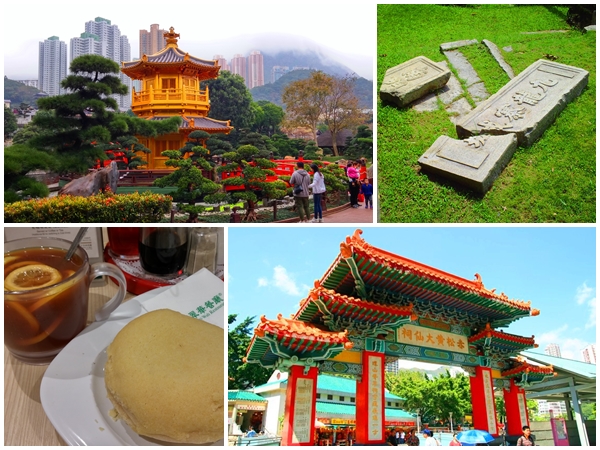A photo as Hong Kong government housing development epitome
This photo shows you Shek Kip Mei Area in Kowloon.
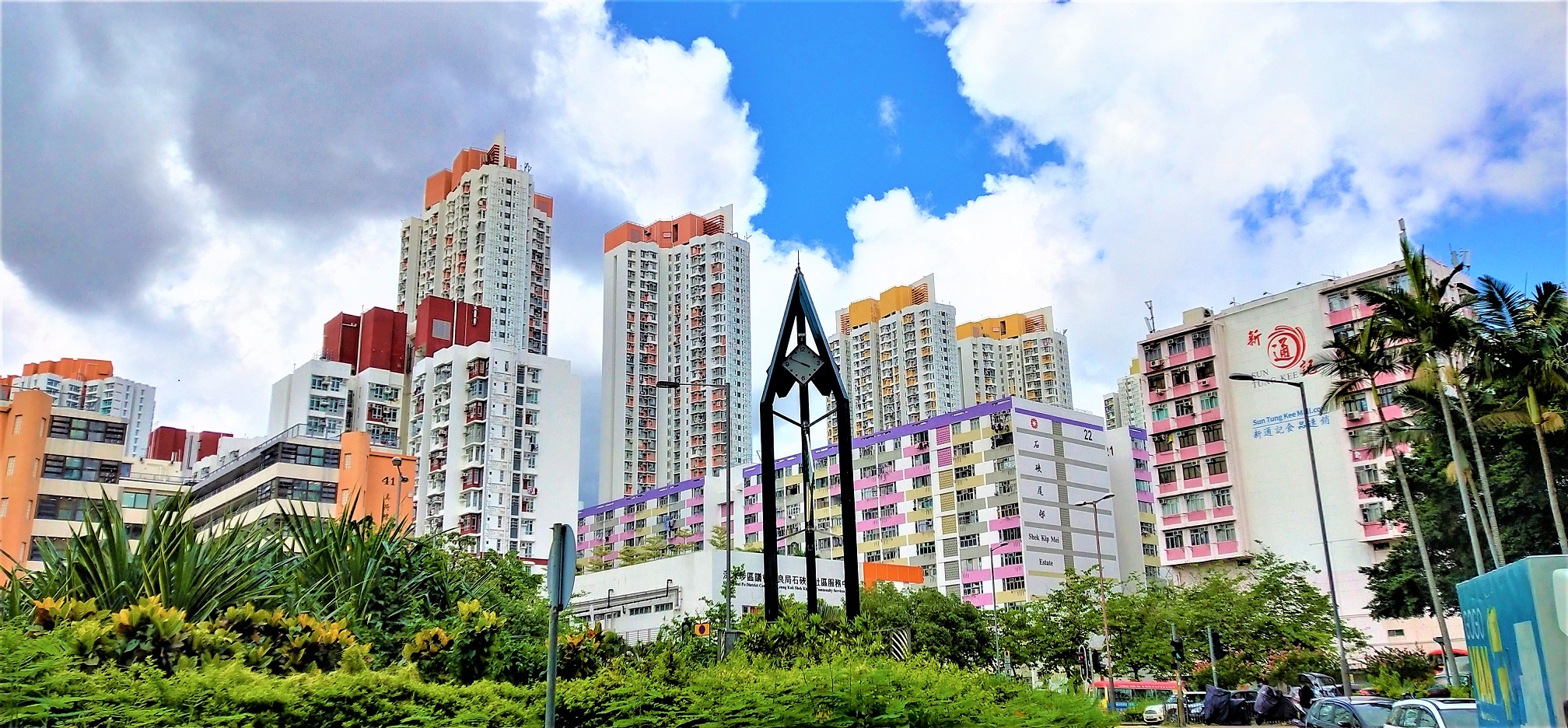
See public housing history of Hong Kong at Shek Kip Mei’s Heritage of Mei Ho House (on the left of the photos)
As the photo can show different generations of public housing, it is actually the epitome of Hong Kong public housing history.
This post is going to show you the details.
If you want to see more about the development of Hong Kong Government housing, you may TIY, tour the exhibition at Heritage of Mei Ho House on the left side of the photo by yourself (Sham Shui Po MTR Station Exit B2).
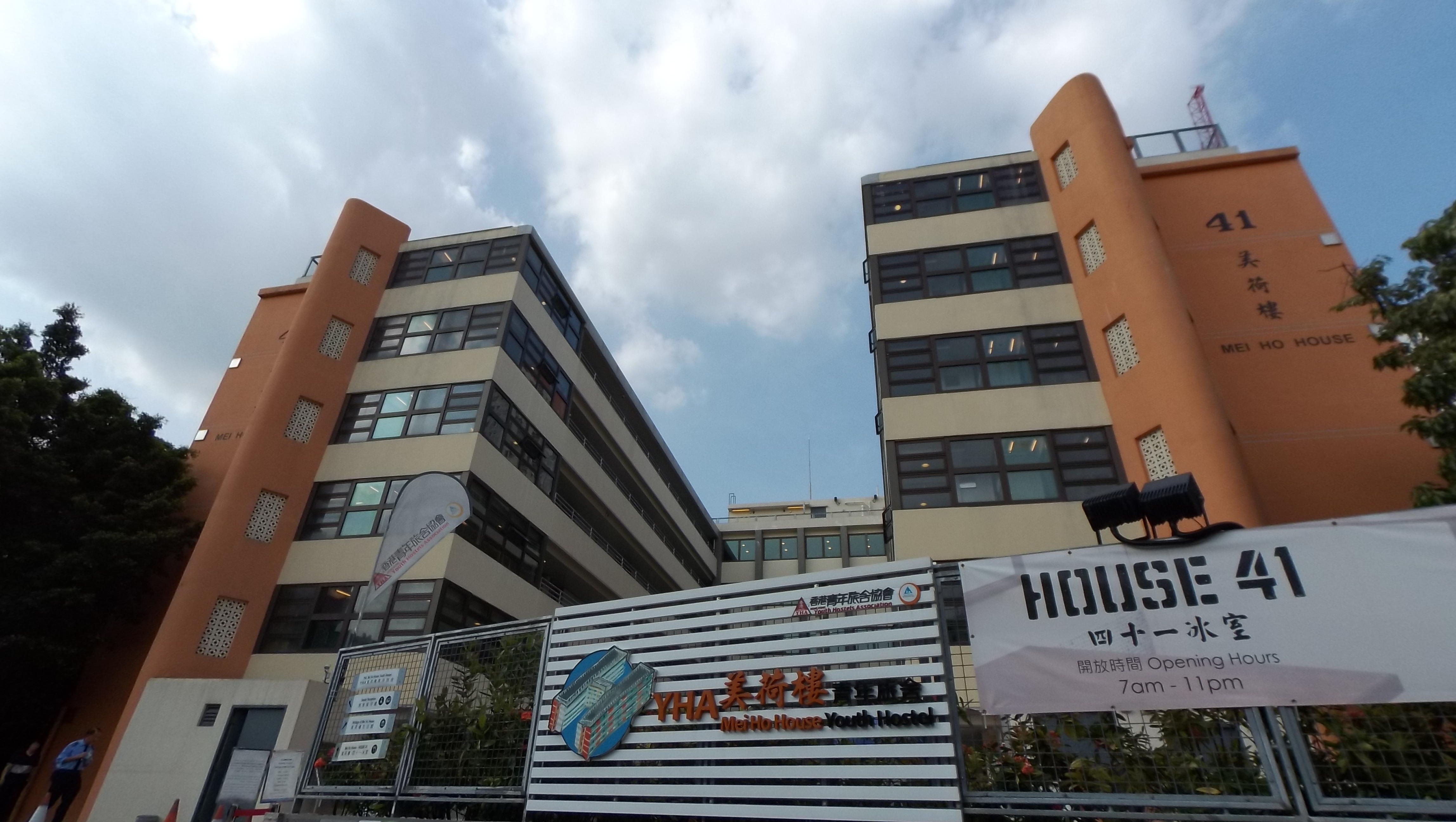
The Heritage of Mei Ho House has the exhibition for the public housing history of Hong Kong
Of course you can have Frank the tour guide Kowloon private car tour to visit Mei Ho House, visit other sightseeing points and enjoy local tea set easily.
Mei Ho House is a good place to go for the Singapore travelers under the new travel bubble to compare the public housing of Hong Kong SAR and Singapore.
From haphazard squatter areas to high-rise residential buildings
Back to the early 1950s, the area with a lot of public housing today was a big squatter area for the mainland Chinese refugees built by the inflammable materials.
On Christmas Day of 1953, a big fire accident caused about 58,000 people homeless.
Hong Kong Colonial Government stepped in first for resettling the victims and second for getting back the valuable land to develop manufacturing industries.
Block 41 Mei Ho House (on the left side of the photo), which is kept up till today as the youth hostel with exhibition gallery, and others were built to form the first resettlement estate for the homeless families in 1954.
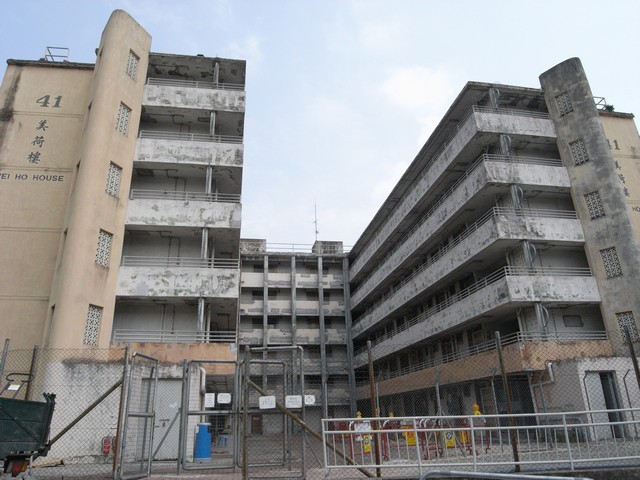
Mei Ho House, before restoration
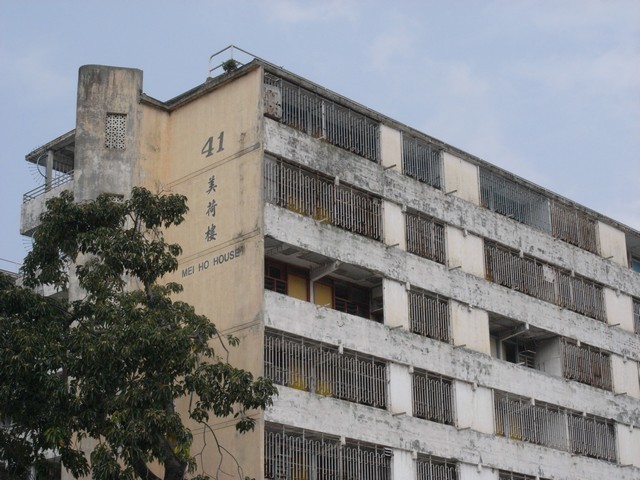
Mei Ho House was built after the squatter fire in 1953
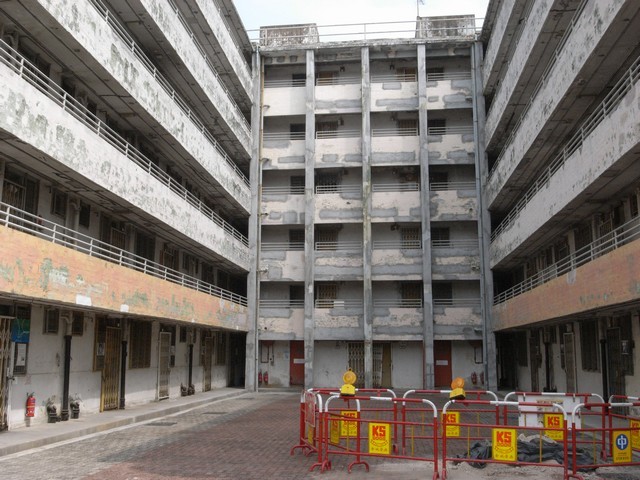
Mei Ho House is the last H-shpaed resettlement building
Although a five-people family could only get a 120 square feet apartment without a toilet and kitchen, it was a lot safer to live in the permanent concrete building than in the wooden huts.
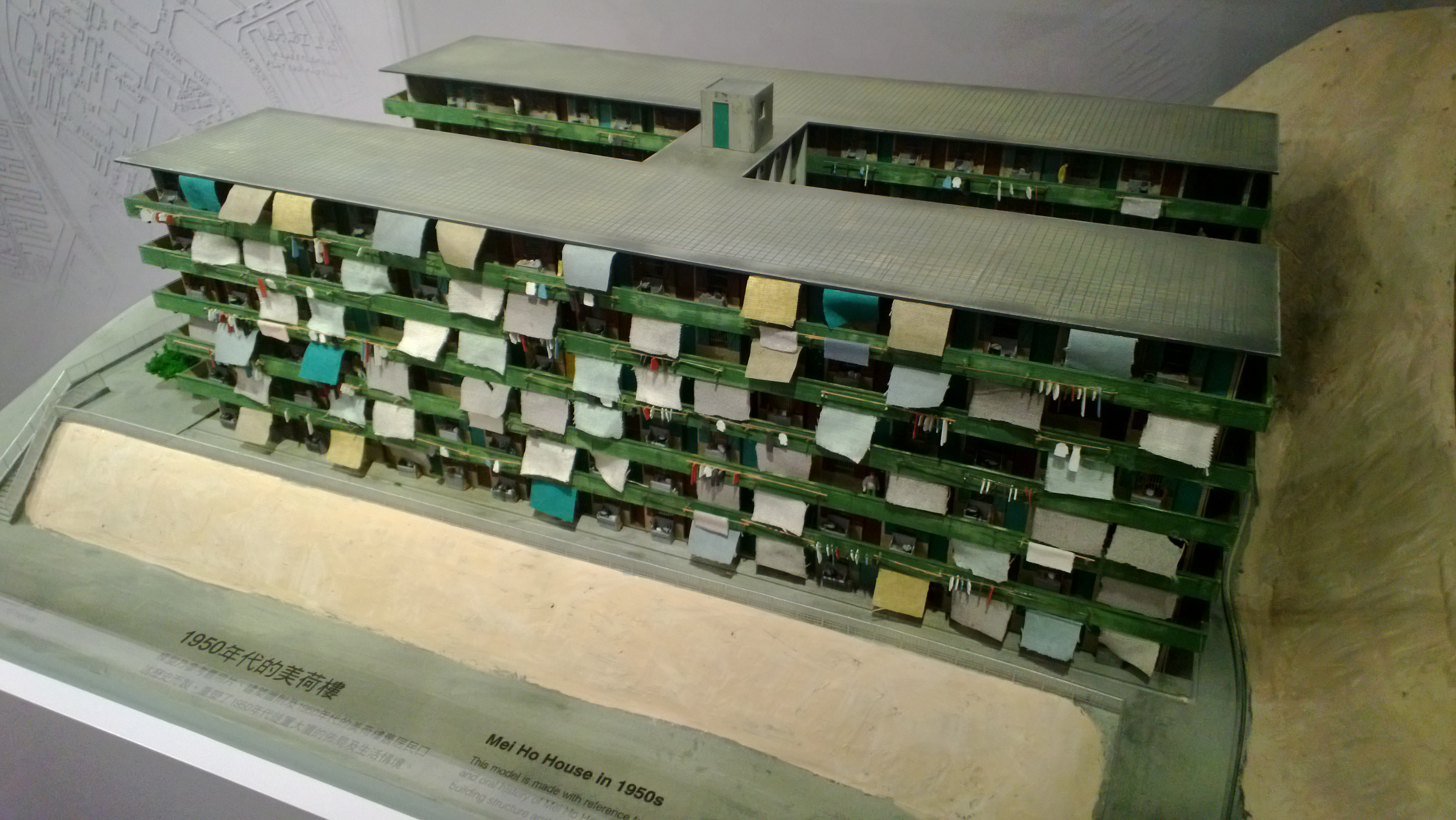
Model shows visitors the original Mei Ho House in the past
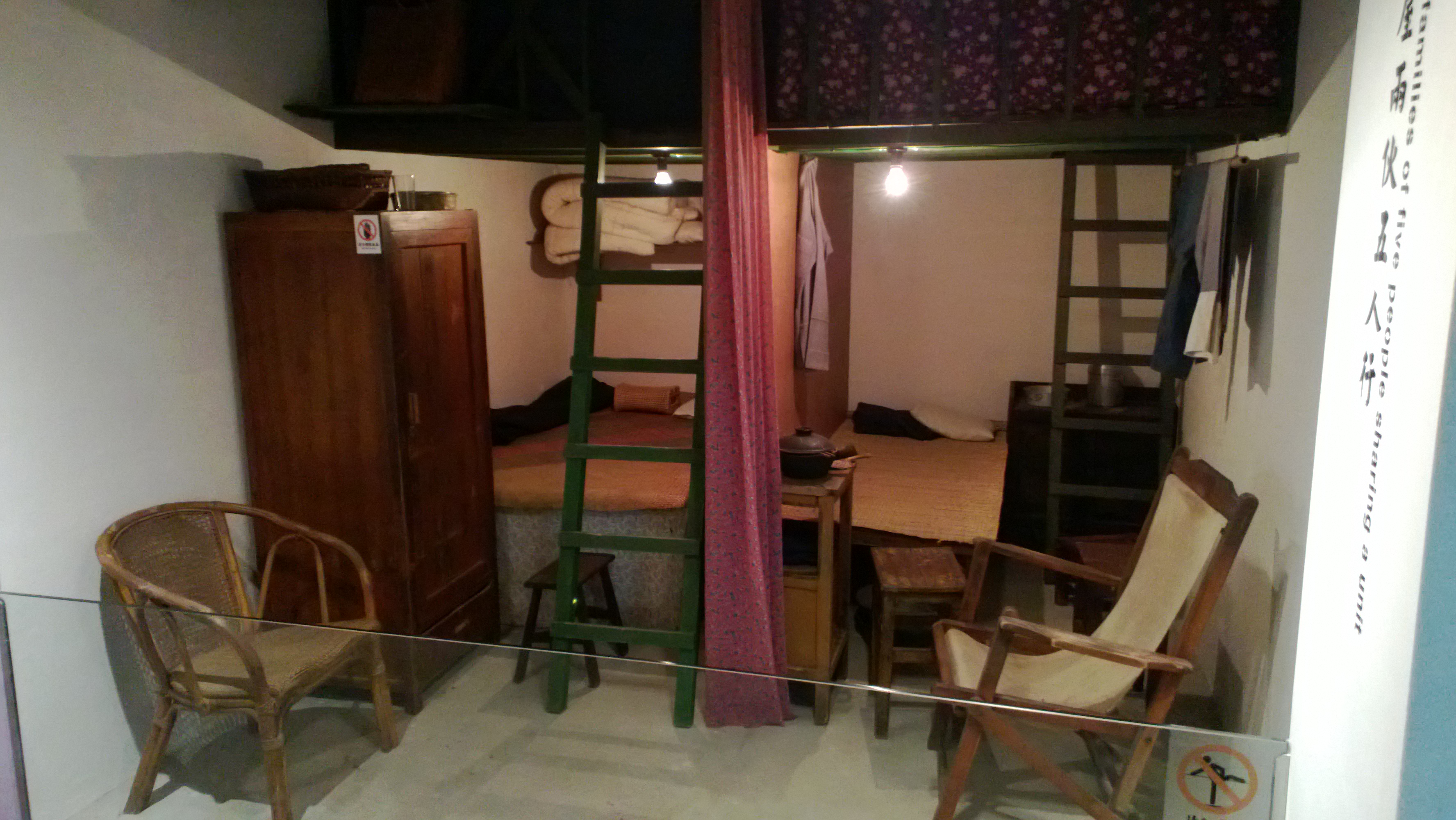
The old style living room furniture in Mei Ho House apartment
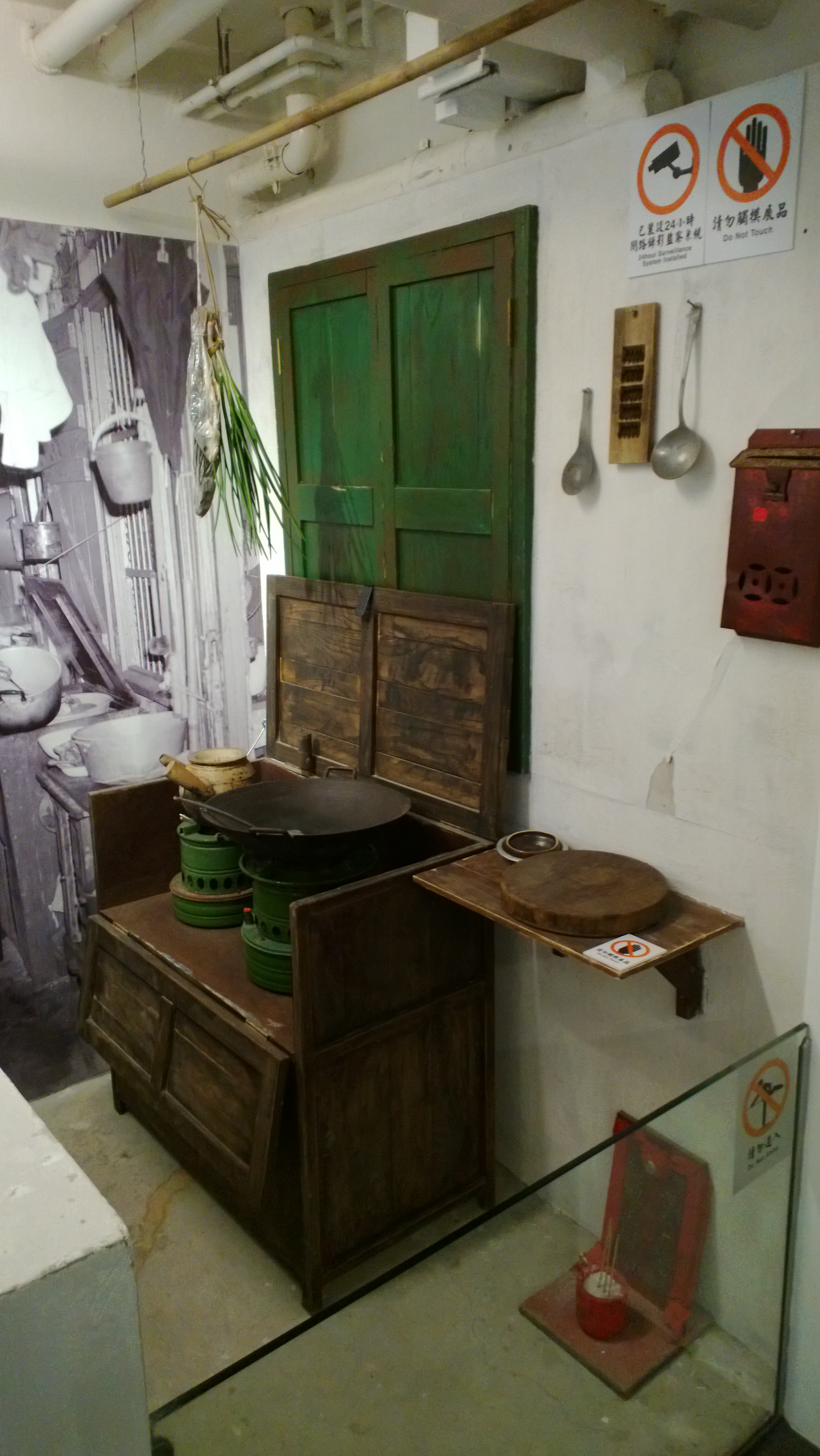
Mei Ho House apartment kitchen was on the corridor at first
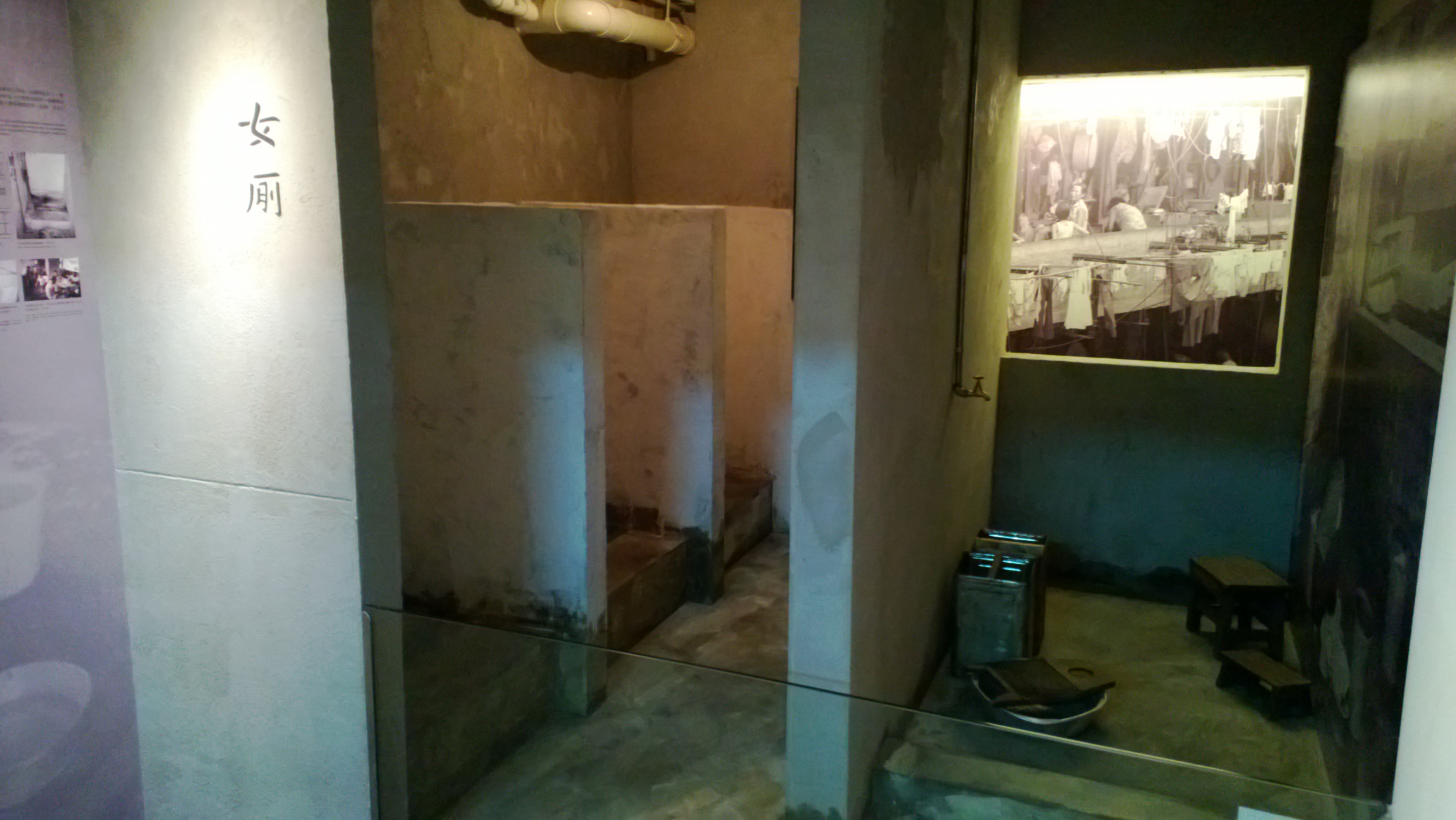
People shared the public washroom at Mei Ho House in the past
In 1973, Governor MacLehose implemented the Ten-year Housing Programme to build more government housing to pacify the poor commoners.
Mei Ho House was upgraded and Block 22 in the center of the photo and other new public housing for rental were built.
The buildings got elevators.
The apartments had toilets and kitchens.
Residents’ living standard improved largely.
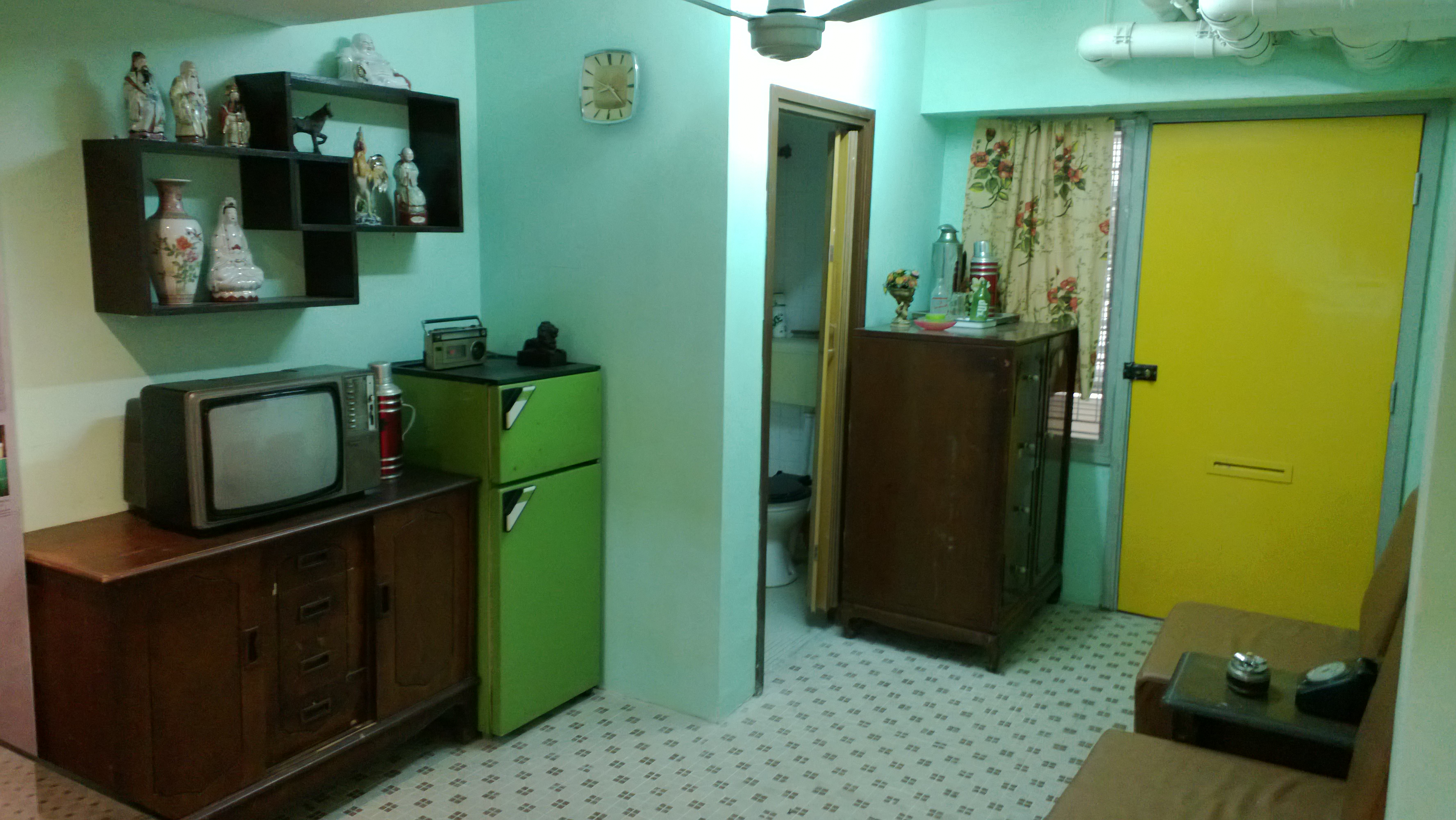
The living room of the upgraded Mei Ho House apartment
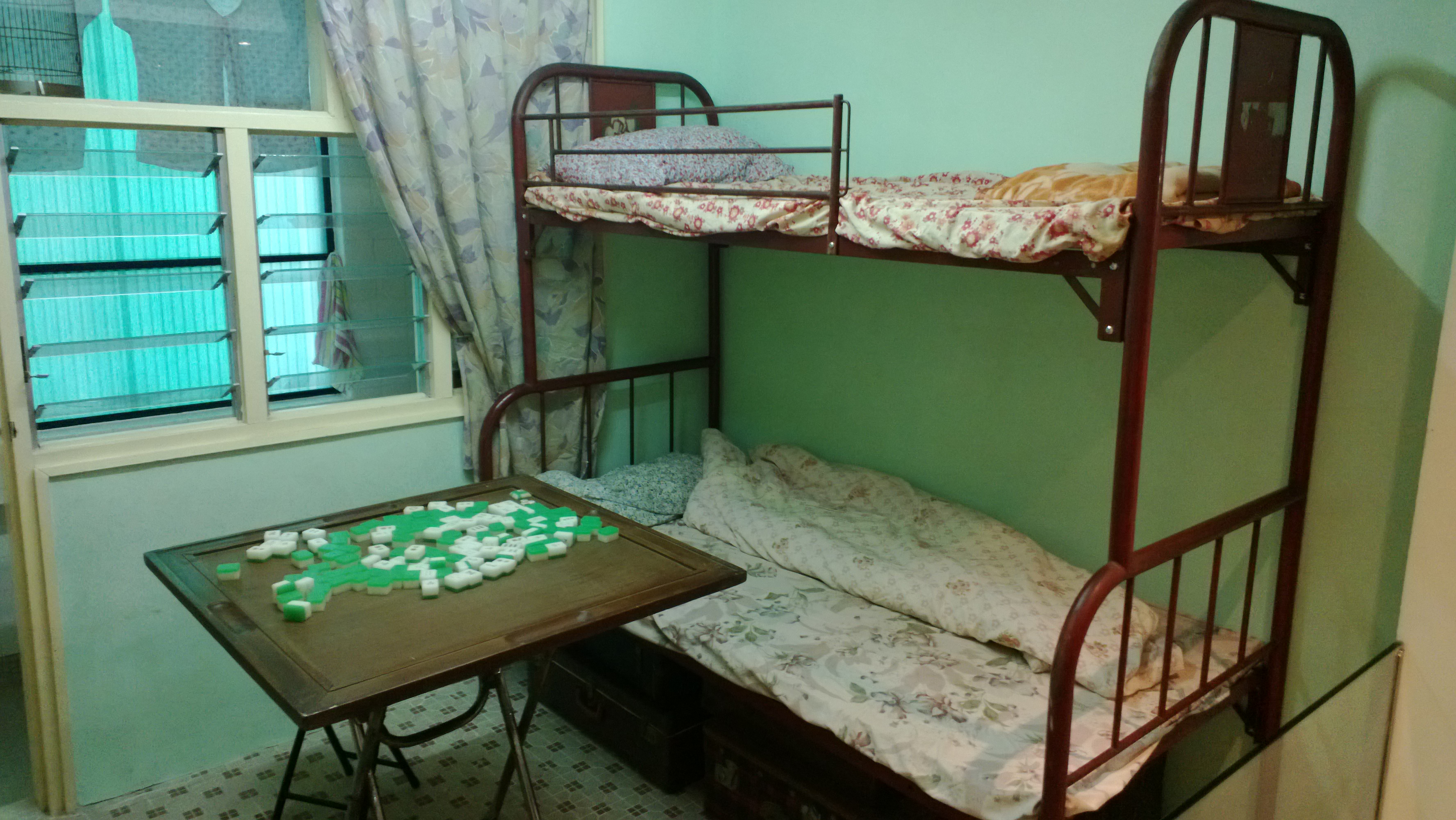
Bedroom with mahjong table at the upgraded Mei Ho House apartment
In the 1980s, Government public housing supply gradually became the long term social welfare from the short term relief measure.
The height and standard of public housing blocks got higher to cater the ever-increasing tenants and households on the waiting list.
The high-rise public housing blocks are a lot better than the old and decaying old private tenement buildings.
They even look like the new tall private condo buildings.
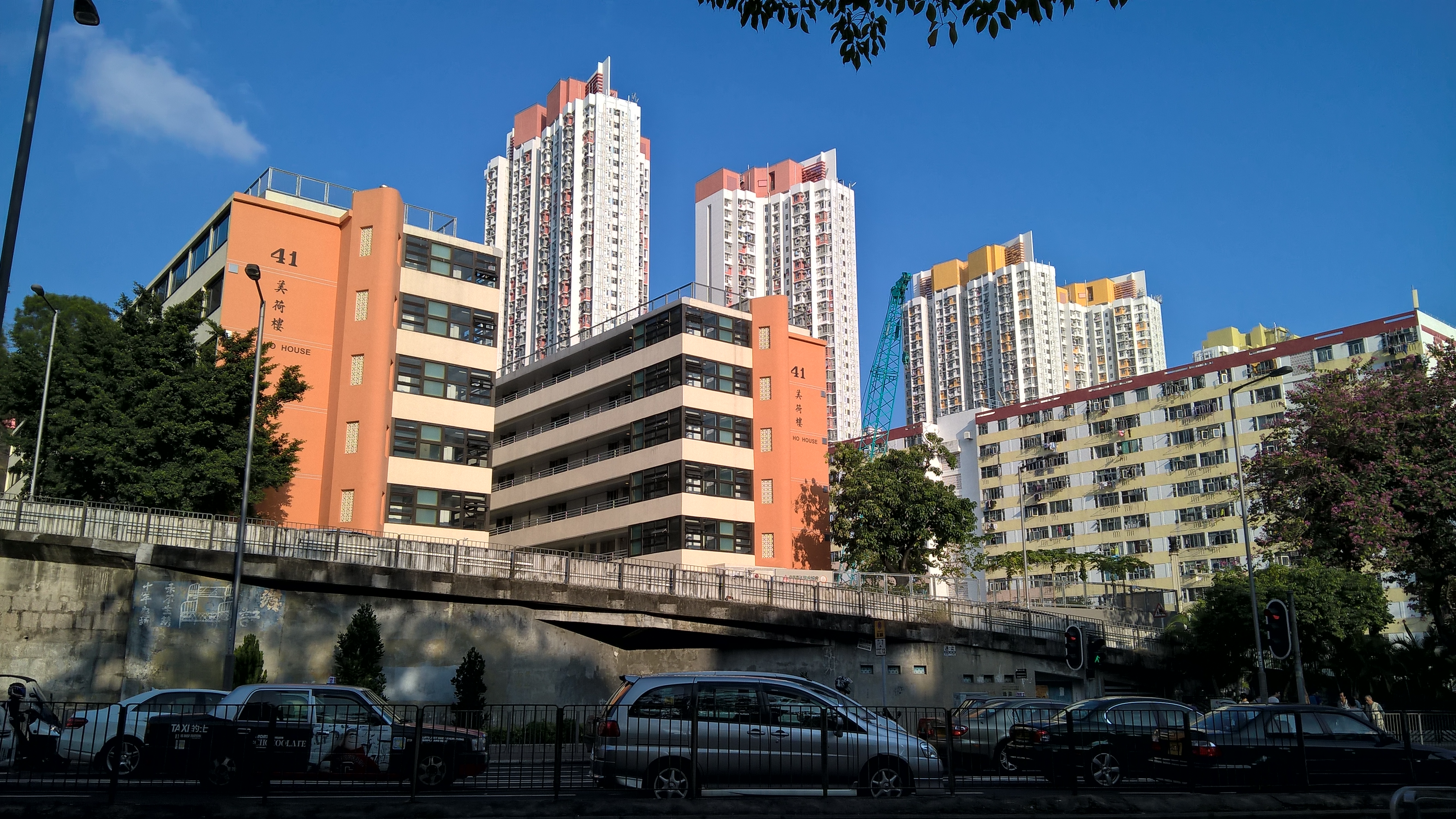
Mei Ho House (the short and orange building on the left) is right next to other old and new public housing buildings.
You can also see the above-mentioned history at the history gallery of the Heritage of Mei Ho House.
To TIY (tour it yourself), you may take MTR to Sham Shui Po MTR Station Exit B2.
Visit Mei Ho House during Frank’s Kowloon private car tour to see more
Apart from TIY the Mei Ho House, travelers can be the clients of Frank the tour guide to visit the exhibition and see more.
During Frank’s Kowloon half day private car tour, clients can have docent tour at Heritage of Mei Ho House.
Kowloon cultural Highlights private car tour
Private car tour for cultural highlights of Kowloon. Tour programme includes…
- English / Mandarin / Cantonese speaking private tour guide service
- Air-conditioned sightseeing car with driver
- A local dim sum / Hong Kong style tea break
[maxbutton id=”12″]
[maxbutton id=”65″]
Clients can also visit the new but traditional Nan Lian Garden, solemn Chi Lin Nunnery, interesting Wong Tai Sin Temple and enjoy the tasty local tea set at the local restaurant.
Frank hopes he can offer the easy private car tour experience to Singapore clients under the new travel bubble and other clients in 2021.
For further questions, please contact Frank



